In anticipation of a busy selling season this summer at the Silver City Store, I am painting like fury to have inventory. If I can get enough small pieces finished ahead of time, then I can return to painting larger Tulare County scenes for the solo show in the fall at CACHE in Exeter.
The most popular scene, assembly-line style for the base coats. Fret not: they will be detailed individually, and I won’t have all of them on display at the same time.
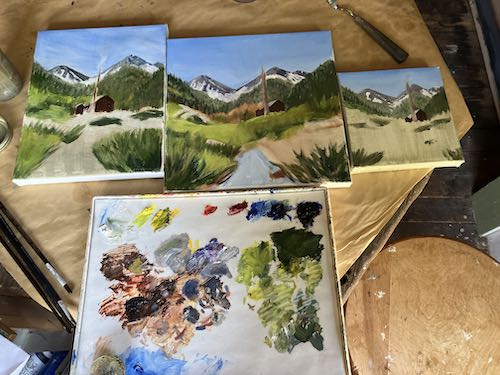
All of these are in various stages of completion, contributing to a sense of chaos and indecision as to how to proceed. It’s just part of the process when one chooses to be a factory, churning out many paintings of the same scenes.
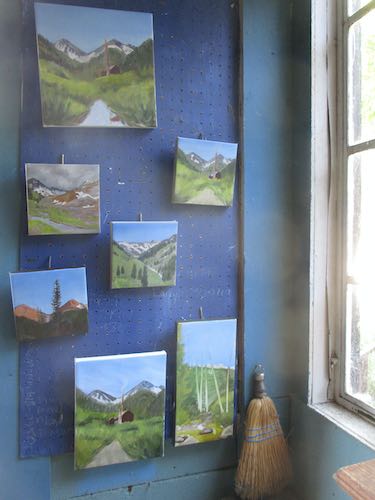
These 6×6″ will be ready to go, once dried, scanned, and varnished.
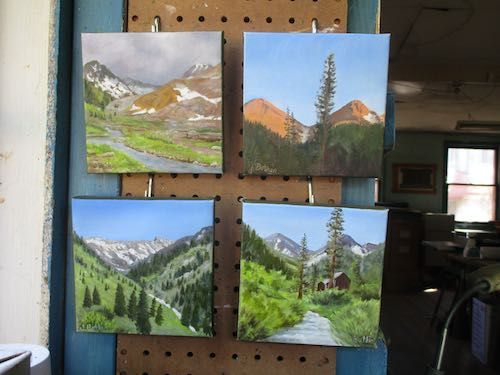
This one was easier the second time I painted the scene. I’m a little reluctant to look at it side-by-side with the first version in case I decide this one is A. better or B. needs more work.
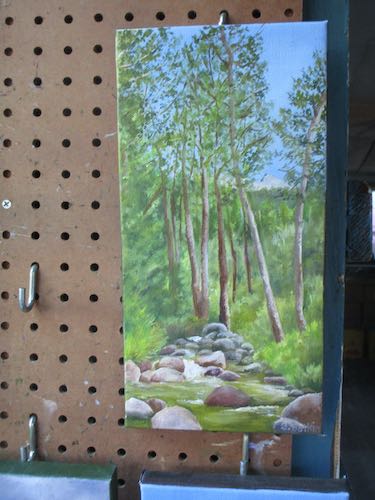
Finally, I started a 20×24″ painting of a scene shared with me by a drawing student. It looks like a weird abstract in the first pass over the canvas, but you trust me, yes? And you probably recognize the scene in the second photo here.
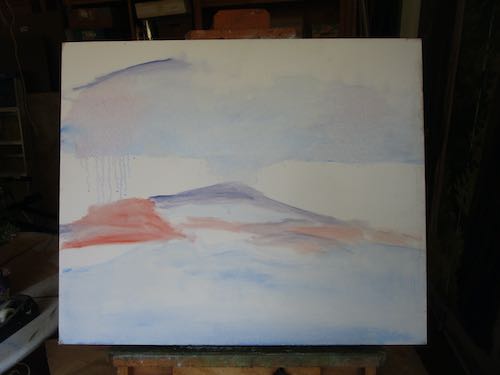
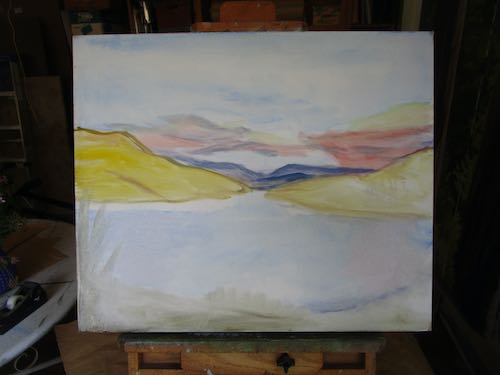
This one is going to be challenging but very satisfying. I messed with the photo to make it look more like we want to remember the scene rather than just accepting what the camera says. It really is a classic Tulare County vista.
2 Comments
I get the concept–it’s like crocheting a few rows on one afghan, then crocheting a few rows on a different afghan using a different pattern. Some of my fellow fiber artists have many WIPs (Works In Progress) but personally, I like to start a project, finish it, use the leftover yarn for patchwork charity afghans, then move on to the next project. Whatever floats your boat (on Lake Kaweah)!
Sharon, if I figure out my hourly “wage”, I will want to give up on this endeavor, particularly when the stores need to keep 30% to make it worth their while to sell. So, I continue seeking ways to paint faster. Of course, if paintings aren’t selling, then there is no need to increase inventory. It would be nice if art institutes and art departments in colleges taught the business end of things; I’ve learned it in the School of Figure It Out.
Comments are closed for this article!